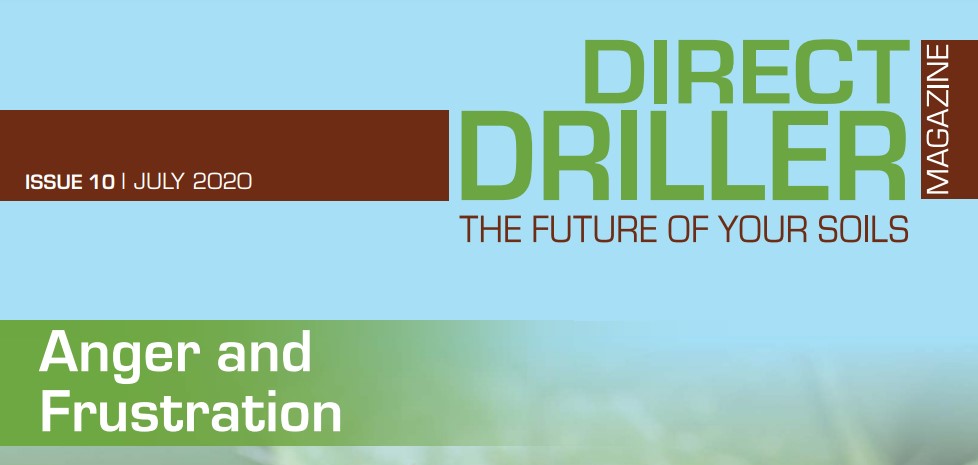We, the readers of Direct Driller, need to give a huge round of applause to Clive and Chris, the energy behind this magazine, together with all the contributors to this issue. The contents is truly awe-inspiring, and the knowledge it contains colossal. It’s impossible to pick individual articles because that relegates the others, and it is all Premier League stuff. It may be pie in the sky, but I continue to envisage staff and students in colleges and universities up and down the land devouring each issue, for both its editorial content and the highly focussed advertising it carries.
If you, as a reader, have connections in these places do please introduce Direct Driller to them. We would be delighted if they got in touch with us. I can see staff and students being inspired to set up studies on a whole variety of direct drilling topics – drills; fertilisers; organic No-till; crop protection; cover crops; crop termination; crop rotations – and much more. No-till presages a whole new world to research, understand and implement.
The ‘funding’ is already there and I can’t for the life of me see what is holding farm education back, while farmers, such as those featured in every issue of Direct Driller, are doing their own experimenting and assessing. The topic is important for practical farmers today. All involved in farming are well aware that we are at a tipping point. We have perhaps a year, two at most, to decide the direction of travel for our farms. How are we going to make up the financial shortfall? Is our farm on the right course? Given what we know, or anticipate, or fear for the future, can we say with confidence that we are are doing the right thing? Going in the right direction?
As we work our guts to get the harvest in there may well be a moment when farm planning takes a lucid position in our minds. Get a good day when the wheat is fit, the yield better than you dared expect, and in the cab there’s the hum of the harvester engine, the rattle of corn going up the feeder… just right to get those ‘what if’ thinking juices going.
There’s so much to consider, from the present financial position of our farm today, the margins we are making, and the people who are currently involved in the business. Are the important figures for the farm business getting better, or have the numbers showing our net returns, the figure that remains after all the costs are taken into account, been somewhat lacklustre? Here are the warning signs which we can choose to ignore or decide to address, either on our own or with the help of others.
Many will choose the former. There’s nobody they know with the answer, and the problem with experts is that there’s no point in ignoring their advice. Experts can of course be disatrously wrong. The knowledge contained in this issue can only help set you up for better things. Happy reading!



